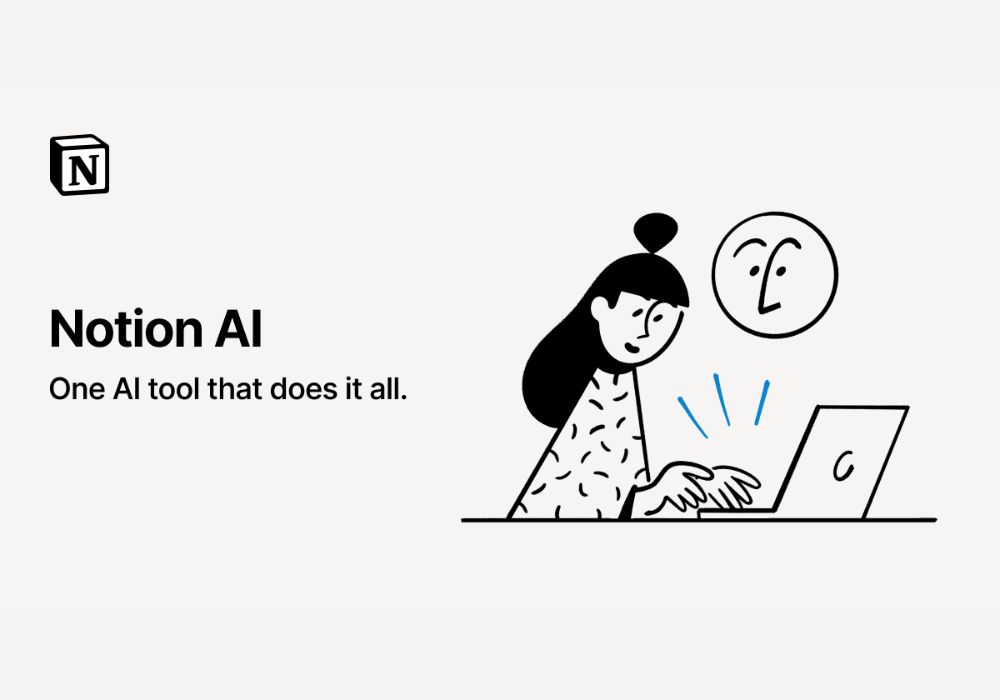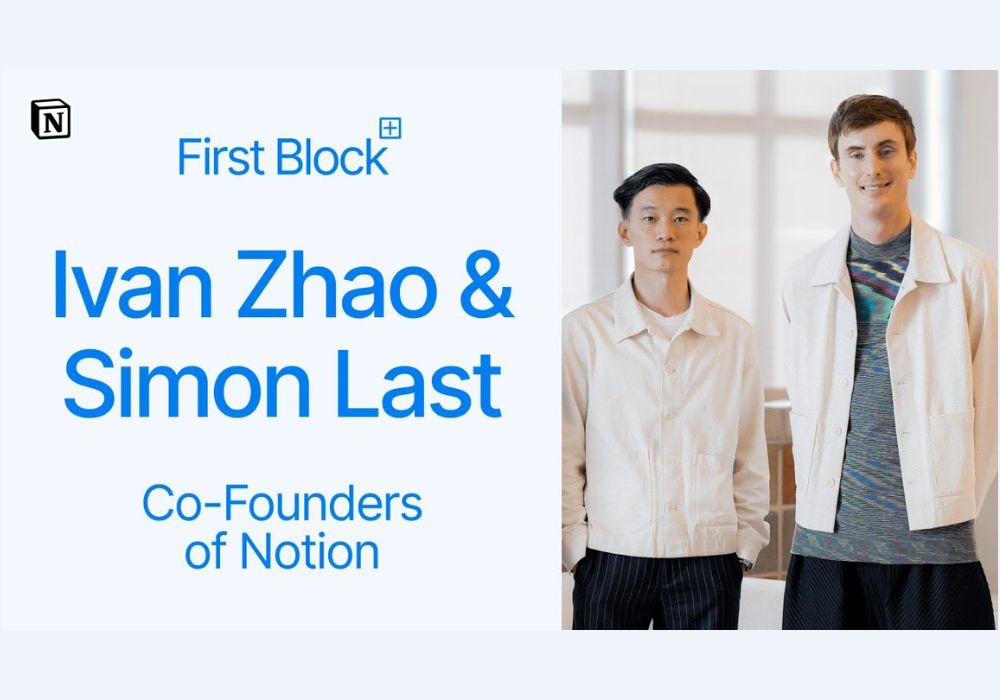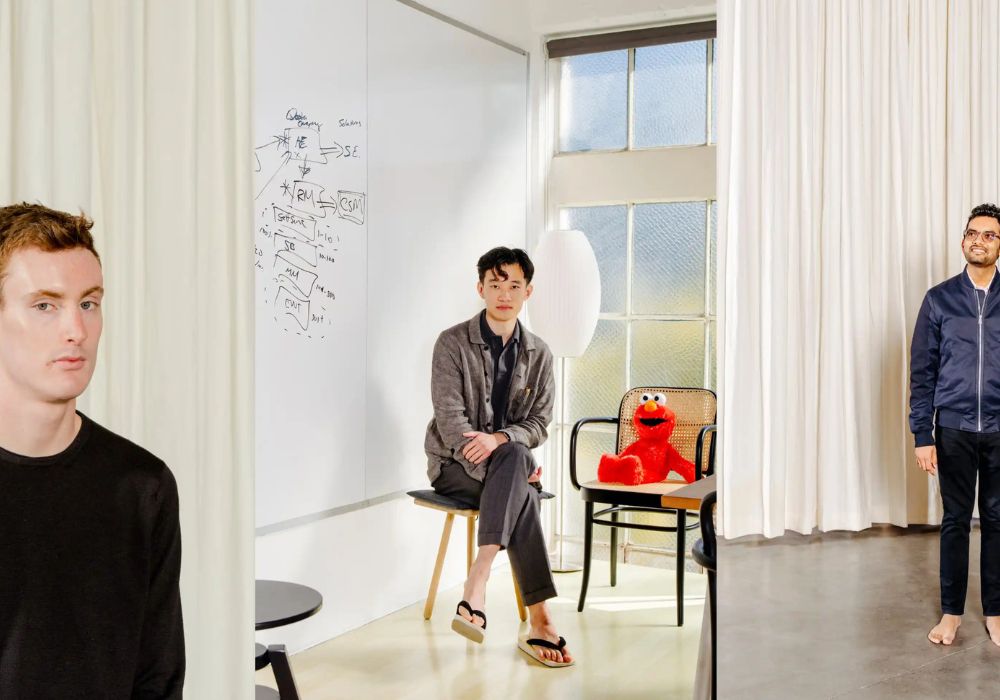Kyoto, Japan—2015. The scent of cheap instant noodles hung in the air of their tiny apartment as Ivan Zhao and Simon Last stared at their failing startup. They had fled San Francisco’s crushing expenses for Japan’s ancient capital, not for spiritual enlightenment but pure financial survival. Their bank account was bleeding out, their product was crashing constantly, and they had just let go of their entire team. This was the brink of startup death—the moment where 90% of ventures collapse. What happened next would become Silicon Valley legend: instead of giving up, they spent 18 hours a day for months rebuilding their product from scratch, fueled by ramen and conviction that people needed a Notion productivity tool to organize their thoughts and work .
This is not another Silicon Valley fairy tale. This is the story of how relentless focus on user needs, community-led growth, and strategic patience transformed a failing startup into a $10 billion productivity powerhouse used by over 30 million people worldwide. It’s a masterclass in building a beloved brand in a crowded market—and the painful sacrifices required to pull it off .
Founding Story: How the Notion Productivity Tool Began
The Visionary and The Architect
Ivan Zhao, a designer with backgrounds in cognitive science and fine arts, had been obsessed with a fundamental question: Why are productivity tools so rigid? Computers were supposed to augment human creativity, not confine it. After graduating college, he found himself surrounded by artists and creators who constantly asked him to build simple portfolio websites. The repetitive nature of this work sparked his insight: What if non-programmers could easily create their own tools?
Simon Last, a talented engineer and designer, shared this vision. Together they founded Notion Labs Inc. in 2013, aiming to create the “LEGO of productivity tools”—flexible building blocks that anyone could combine to shape their own digital workspace .
The Near-Fatal Technical Debt That Almost Ended the Notion App
Their initial version, built on a flawed tech stack, was plagued by constant crashes. Early users encountered frustrating bugs and performance issues. By 2015, their seed funding was nearly exhausted with no revenue to replenish it. They faced the startup founder’s ultimate nightmare: continue patching a broken foundation or burn everything down and start over .
“We all would’ve died together,” Zhao later recalled. “It wasn’t much of a choice” . In a move that seemed like business suicide, they:
- Let go of their entire 4-person team
- Borrowed $150,000 from Zhao’s mother to stay afloat
- Relocated to Kyoto to slash living expenses
- Spent months completely rewriting the product
This strategic retreat—what they called their “instant noodle beginning”—became their salvation. With no social connections in Japan and no language skills, they could focus exclusively on rebuilding .
Audience and Positioning: Finding the Notion Productivity Tool’s Trojan Horse
The Pivot That Saved the Notion Software
Notion’s initial vision—”democratizing programming for creative people”—was too abstract. As Zhao admitted: “We focused too much on what we wanted to bring to the world. We needed to pay attention to what the world wanted from us” .
Their breakthrough came when they positioned Notion as an all-in-one workspace that bundled note-taking, project management, databases, and collaboration into one seamless experience. They discovered their “Trojan horse”—people initially came for simple note-taking, then gradually discovered the power to build custom systems .
The Evolution of Their Target Audience
- Initial Target (2013-2015): “Creative non-programmers”—artists, designers, and creators who needed custom tools but couldn’t code. This approach failed to gain traction .
- Pivot Audience (2016-2018): “Productivity enthusiasts” and small teams drawn to their all-in-one value proposition. These early adopters loved the flexibility and became evangelists .
- Expanded Audience (2019-Present): Enterprise customers, students, remote teams, and entire organizations seeking connected workspaces, especially during the remote work boom .
The Unbeatable Value Proposition of the Notion Workspace
Notion’s magic came from solving three universal frustrations:
- Tool Fragmentation: Instead of juggling separate apps for notes (Evernote), tasks (Trello), documents (Google Docs), and wikis (Confluence), Notion offered one connected workspace .
- Customization Without Coding: Their block-based system worked like digital LEGO, allowing users to build exactly what they needed without developers .
- Seamless Collaboration: Real-time editing, comments, and permissions made Notion the central source of truth for teams .
As Apploi’s CTO noted: “I’ve used a lot of different issue management tools and nothing’s come close to this in terms of power” .
Marketing Strategy: The Community-Led Growth Engine Behind Notion
The Organic Growth Machine
Notion achieved what most SaaS companies dream of: 95% organic growth . Rather than pouring money into traditional advertising, they built a growth engine powered by their users’ enthusiasm.
Table: Notion’s Community Growth Channels
| Channel | Impact | Key Metrics |
|---|---|---|
| Template Ecosystem | Users created and shared templates for every use case | Massive library lowering adoption barrier |
| Ambassador Program | 300+ global advocates hosting events and creating content | 1,000+ applicants within weeks of launch |
| Subreddit Community | Organic user discussions and knowledge sharing | 280,000+ members (10x larger than Figma’s) |
| YouTube Tutorials | User-generated content teaching Notion | Millions of views across thousands of videos |
The Template Revolution and Influencer Strategy
Notion’s template gallery became their most powerful acquisition channel. When users discovered templates for everything from startup PRDs to student planners, they signed up to use them, then customized them to their needs. This created a beautiful growth loop: more users created more templates, which attracted more users .
The Influencer Strategy
Notion took an unconventional approach to influencer marketing—they empowered passionate users rather than paying celebrities. Ben Lang, who initially built Notionpages.com as a side project, exemplified this strategy. His enthusiastic template creation and tutorials caught Notion’s attention, and they eventually hired him as their Head of Community .
The “Think It. Make It.” Brand Campaign
As Notion scaled, they launched their first major brand campaign in 2023. “Think it. Make it.” positioned Notion as the bridge between ideas and execution. The campaign featured:
- Bold illustrations from Roman Muradov, zooming in on characters’ minds to show ideas taking shape
- Strategic color breaking from their app’s minimalism with bright yellows, blues, and reds to stand out in cities
- Global presence on billboards, Tube stations, and bus stops worldwide
The campaign successfully translated their product philosophy into an inspirational brand message that resonated with creators.
Growth Milestones: How the Notion Productivity Tool Became a $10B Company
Table: Notion’s Growth Timeline
| Year | Key Milestone | Impact |
|---|---|---|
| 2013 | Company founded | Initial vision set |
| 2015 | Near-failure, pivot to Kyoto | Complete product rebuild |
| 2016 | Notion 1.0 launches | #1 Product of Day/Week/Month on Product Hunt |
| 2018 | Notion 2.0 releases | Second #1 ranking on Product Hunt |
| 2019 | Reaches 1 million users | Product-market fit validated |
| 2020 | $50M Series B at $2B valuation | Unicorn status achieved |
| 2021 | $275M Series C at $10B valuation | 20 million users |
| 2022 | Notion AI launches | 240% growth, fastest-growing app of the year |
| 2023 | “Think it. Make it.” campaign | Estimated 30+ million users |
The Funding Journey
Notion’s funding strategy reflected their disciplined approach. They bootstrapped as long as possible, then raised strategic rounds to accelerate growth :
- 2015: Angel round (undisclosed)
- 2017: Seed round from SV Angel, Sequoia Capital, First Round Capital
- 2019: Series A – $18.2 million
- 2020: Series B – $50 million (Unicorn status)
- 2021: Series C – $275 million ($10 billion valuation)
To complement their growth channels, they also tapped into advantages of mobile marketing that most brands overlook — giving them an edge in reaching audiences on their phones at the right time.
Challenges and Failures: The Complexity of Scaling the Notion App
The Complexity Paradox
Notion’s greatest strength became its biggest challenge. The steep learning curve overwhelmed new users. As one analysis noted: “Users often spend more time learning and configuring than actually getting work done… Notion’s ‘layered versatility’ sometimes results in a ‘monster’ system that consumes more time than it saves” .
The Capability Ceiling
Power users eventually hit Notion’s limits. The platform struggled with:
- Performance issues with large workspaces
- Limited offline functionality
- Advanced database operations that couldn’t match specialized tools
- Complex automation requiring workarounds
As one user noted: “Notion is too complex for the simplest needs but still not powerful or seamless enough for the most complex needs” .
Competitive Pressure
New competitors emerged targeting both sides of Notion’s market:
- Simpler alternatives like Taskade and Craft appealed to those overwhelmed by Notion
- More powerful platforms like Coda and Airtable attracted power users
- AI-powered app builders like AWS App Studio threatened to leapfrog Notion’s model entirely
Becoming a Household Name: The Notion Brand Journey
The Cultural Embrace
Notion transcended software to become a cultural phenomenon through:
- Organic community building: Users formed passionate communities around specific interests—”Notion for Artists,” “Notion for Solopreneurs,” and localized groups worldwide .
- Educational integration: Students and universities adopted Notion for note-taking and collaboration, creating the next generation of users.
- Remote work acceleration: The pandemic made Notion essential for distributed teams needing connected workspaces .
The Enterprise Domino Strategy
Notion cracked the enterprise market through a bottom-up approach. Individual employees would discover Notion, then share it with their teams. Eventually, entire departments would adopt it, creating internal pressure for company-wide licenses. As Duolingo’s Product Manager noted: “We can now keep everyone up to date across the whole team. It helps keep everyone at the right level of awareness and with our speed of execution” .
Long-Term Loyalty Drivers
Notion maintained loyalty through continuous innovation and community engagement:
- Strategic acquisitions (Cron calendar, Flowdash, Automate.io) to expand functionality
- AI integration to stay competitive with emerging trends
- Responsive product development incorporating user feedback
- Transparent communication with their community about the product roadmap
Financial and Operational Insights of the Notion Productivity Tool
The Business Model
Notion employs a classic SaaS freemium model with four tiers :
- Free – Unlimited blocks for individuals with limited features
- Plus – $10/user/month – Extended history and more guests
- Business – $15/user/month – Advanced collaboration features
- Enterprise – Custom pricing – Advanced security and controls
Additionally, Notion AI is available for an extra $8 per member per month, creating a new revenue stream .
The Operational Evolution
From their humble beginnings with just 4 employees, Notion has scaled to approximately 500 employees while maintaining their product focus. They’ve made strategic acquisitions to accelerate capability development rather than building everything in-house .
Lessons Learned: Startup Wisdom from the Notion Productivity Tool Story
1. Find Your Trojan Horse
Don’t lead with your most ambitious vision. Notion discovered people wanted simple note-taking first, then gradually embraced building custom tools. As Ivan Zhao reflected: “Have a big vision, but find your Trojan horse” .
2. Community Beats Advertising
Notion’s 95% organic growth came from empowering users to create templates, tutorials, and local communities. “Identify trends within your user base and build on top of that,” advises former Head of Community Ben Lang .
3. Solve Your Own Problems
Notion emerged from Zhao’s frustration building websites for friends. The most compelling solutions often come from personal pain. “One of the best ways to find a startup idea is to just be aware of your own unmet needs,” says Lang .
4. When You Need to Pivot, Go All In
Notion’s complete product rebuild in Kyoto seemed extreme but saved the company. “Be versatile. Have strong convictions, but loosely held,” Zhao advises .
5. Balance Power and Simplicity
Notion’s ongoing challenge shows that flexibility must be balanced with approachability. Consider progressive complexity that doesn’t overwhelm new users.
6. Own Your Ecosystem
Notion’s template gallery created a powerful network effect. By enabling users to create and share solutions, they built an ecosystem that continuously attracts new users.
7. Grow When You’re Ready
Notion delayed VC funding until they had strong product-market fit. “Know when to take people’s money,” Zhao suggests. “There’s a lot to be said for turning down cash until you have something that’s ready to have fuel thrown onto it” .
The Legacy: How the Notion Productivity Tool Became a Symbol of Innovation
Notion’s journey from a Kyoto apartment to a $10 billion company represents more than a successful startup story—it demonstrates the power of building with empathy for users’ deepest workflow frustrations. Their success came not from outspending competitors, but from understanding human needs more deeply.
The company that almost died in 2015 now helps millions organize their work and lives. Their story proves that with the right product, passionate community, and willingness to make hard choices, even instant noodles in a foreign apartment can fuel world-changing innovation.
As Reddit co-founder Steve Huffman observed: “Notion is so good it makes a devilishly complex problem seem simple” . In the end, that simplicity—born from years of complexity and near-failure—became their greatest achievement.







